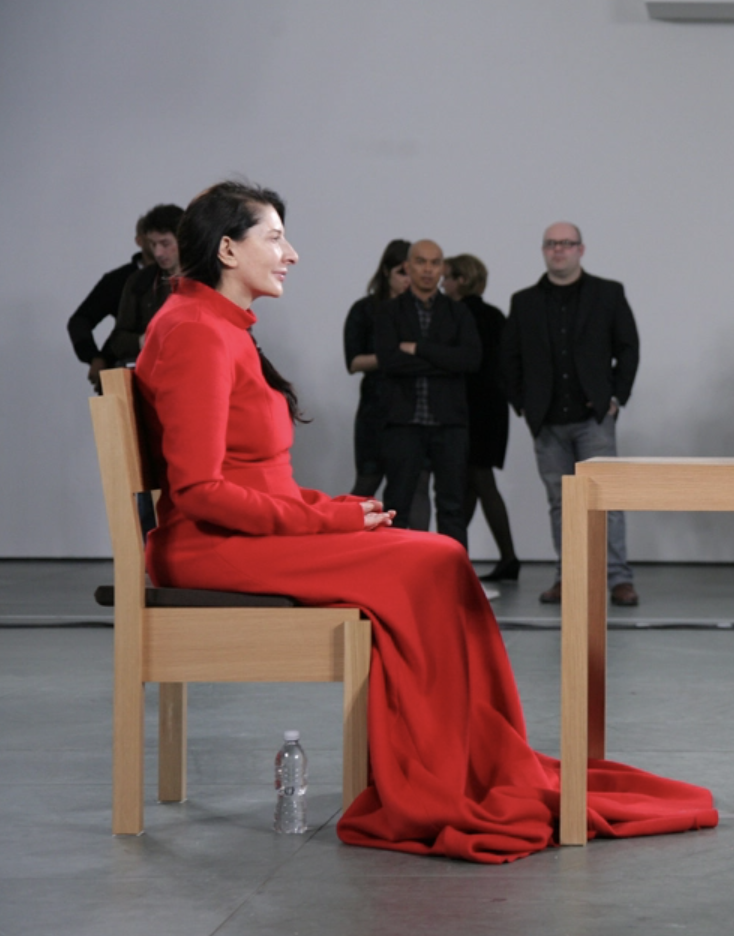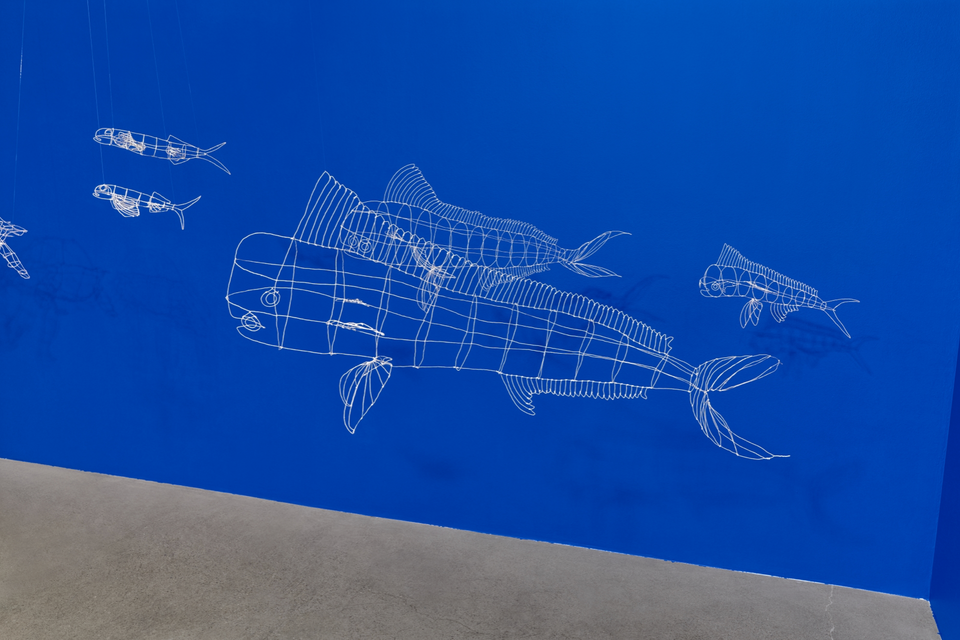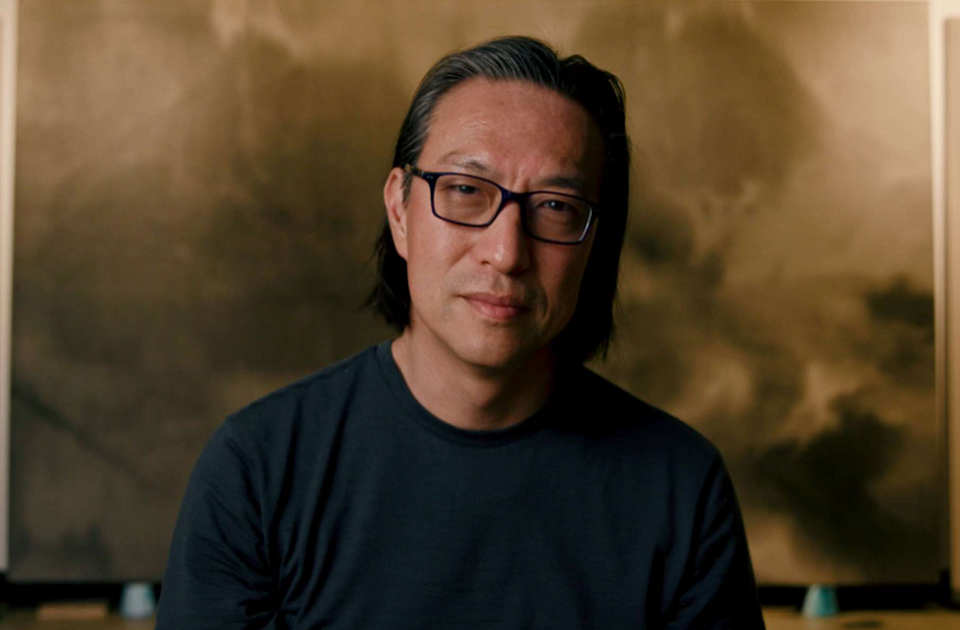The first week of September typically marks the beginning of the new season for the contemporary art world. In New York City, for instance, most galleries significantly reduce their hours of operation during July and August, and some close entirely. September marks their vigorous re-opening, often displaying the boldest, brightest and highest selling artists in a gallery’s roster.
September openings are a frenzy of crowds hopping from show to show, hoping to see something new and interesting – or at least something worth talking about. With so many openings happening at the same time, there’s a fair chance you’ll see something within your interests, but an equally fair chance you’ll see a lot that’s . . . not.
This is a rundown of my admittedly biased opinions of the more notable shows I was able to see on the first (presumably biggest) opening night of the 2008-09 art season – Thursday, September 4th.
Johnston Foster at Rare Gallery – Despite being pinned as resembling one of the sculpted angry mobsters (not necessarily a complement), this show left me wanting more. Johnston’s aesthetic of recycling odd materials into recognizable forms is familiar and no longer novel enough to stand on its own as spectacle, so I found myself hoping the installation would be balanced conceptually – give me something to chew on, so to speak. It may have been there, but I didn’t find it and the work itself didn’t compel me to dig deeper.

On the upside, next door was a surprising and engaging photography show at Danziger Projects by artist Paul Fusco. These beautiful images played in the space between art and journalism and were obviously poignant, given the state of our presidential race. Here were images from the train carrying Robert Kennedy to Arlington National Cemetery from New York, showing crowds of devoted mourners and spectators lined up to see him pass.
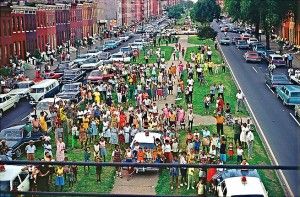
Phoebe Washburn at Zach Feuer Gallery was our next stop. Although the show was hugely crowded, I found the spectacle outweighing the payoff for me again. Washburn, noted for her massive installations of repeated objects of detritus, seemed to be turning a new corner with her make-shift store and installations resembling ecosystems. I thought this had a lot of promise, but in the end, the work seemed to be problematic for me in two different ways. The store, which sold made-on-demand products (pencils, shirts, beverages and other “ort”) maybe worked too well in pointing to the futility of a product/consumer system – I didn’t want any of the “ort” sold, but I wasn’t drawn in with its aesthetics enough to balance what I read as the message. It reminded me of Jason Rhoades’ Pearoefoam, for some reason; but in that case I was sucked in by the balance of concept, absurdity, and beauty.
On the flip-side, Washburn’s installations resembling ecosystems or filtration systems looked fantastic, but weren’t actually functional; rather, they carried the idea of functional systems. Though that is certainly a legitimate pursuit, they would be so much better if they actually functioned as filtration or ecosystems, because it’s common knowledge that such systems can be easily produced. At present, the sculptures seemed to point toward a necessity for such creative and functional systems. At this point, I think I’d rather see the thing itself and marvel at its beauty and mystery than a sign pointing to it. I wanted it to go one step further.
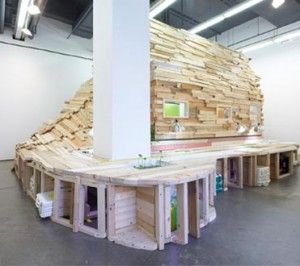
Our second-to-last stop was at Max Protech for Mike Cloud’s new paintings. I’ve been a fan of Mike’s paintings for a few years now, and they stood out from the myriad of shows opening in Chelsea by pushing the conversation about the nature and significance of painting (and art) in new directions. I found many of them visually compelling and some of them visually revolting. All of them seemed to me to contribute to an interesting conversation surrounding aesthetics, art, the art market, and painting. It was refreshing to see vulnerability and questioning as the opening to a new art season rather than repeated proclamations (aren’t these paintings great!?!). Cloud’s clunky, hand-sewn and roughly painted “Quilt paintings” make the viewer stop short and re-assess pre-conceived notions. They are a new exploration of a visual language system Cloud has constructed – one I would be happy to speak as fluently.
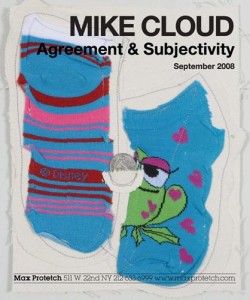
On a final note, Andreas Serrano’s photographs at Yvon Lambert were, literally, crap.

